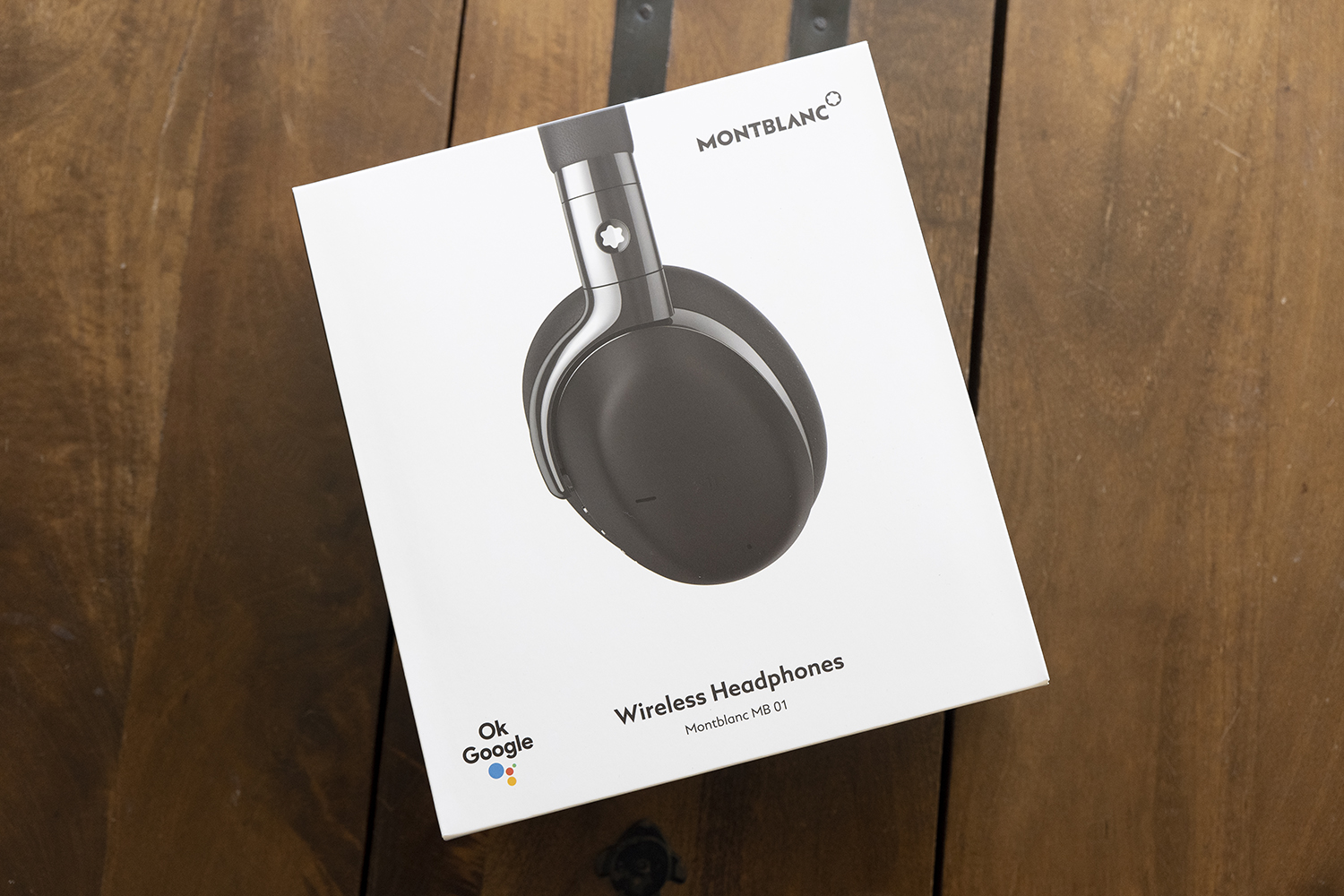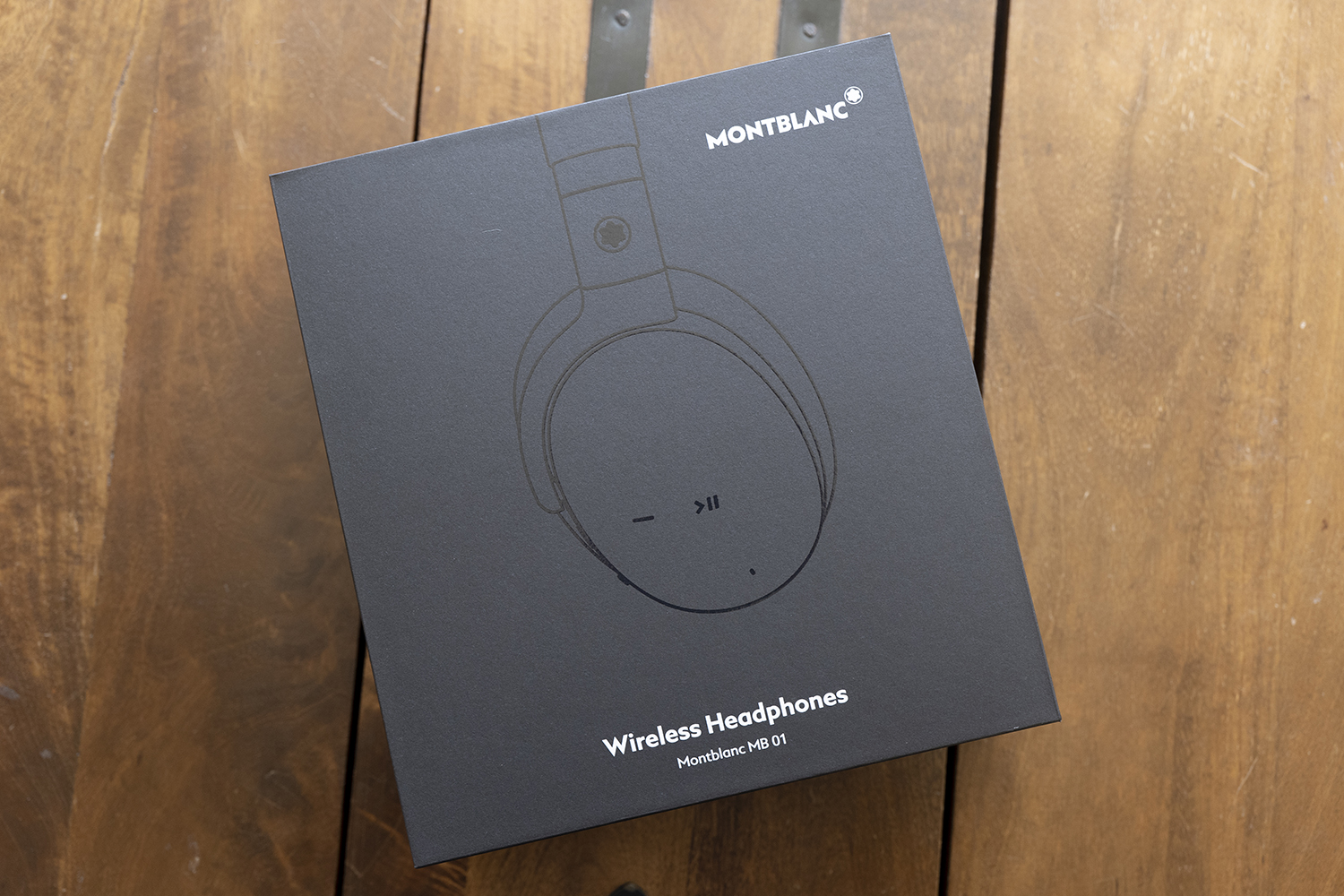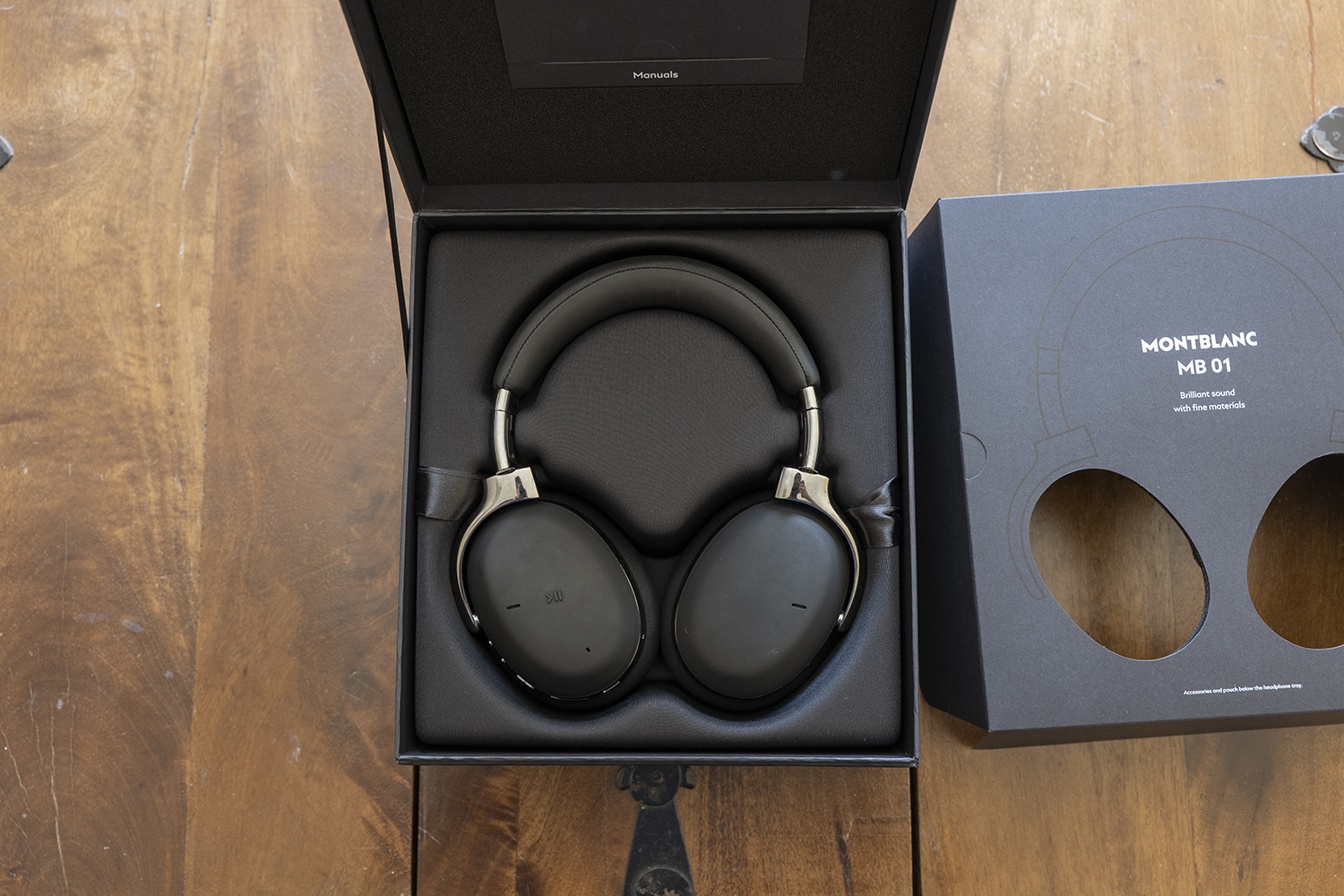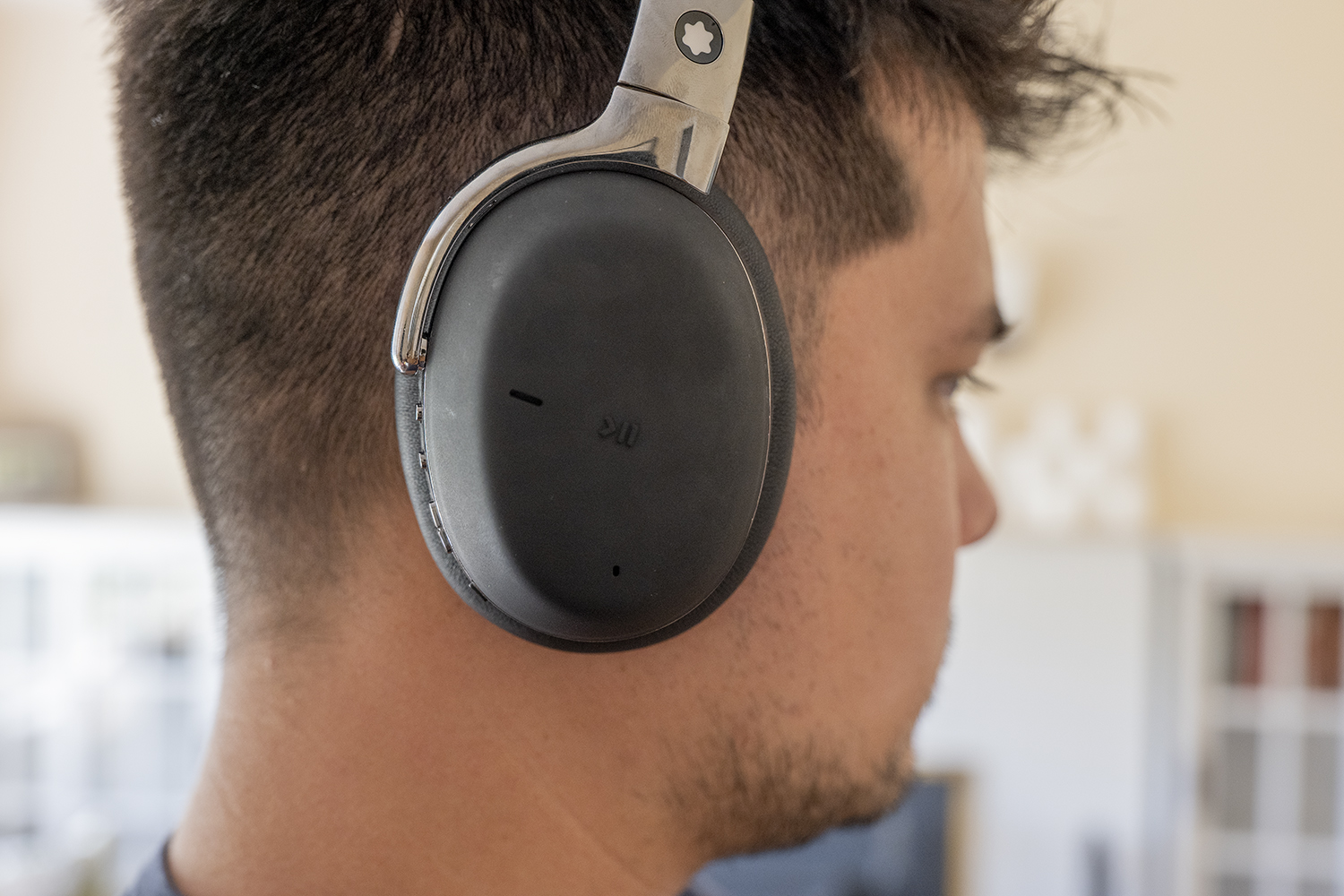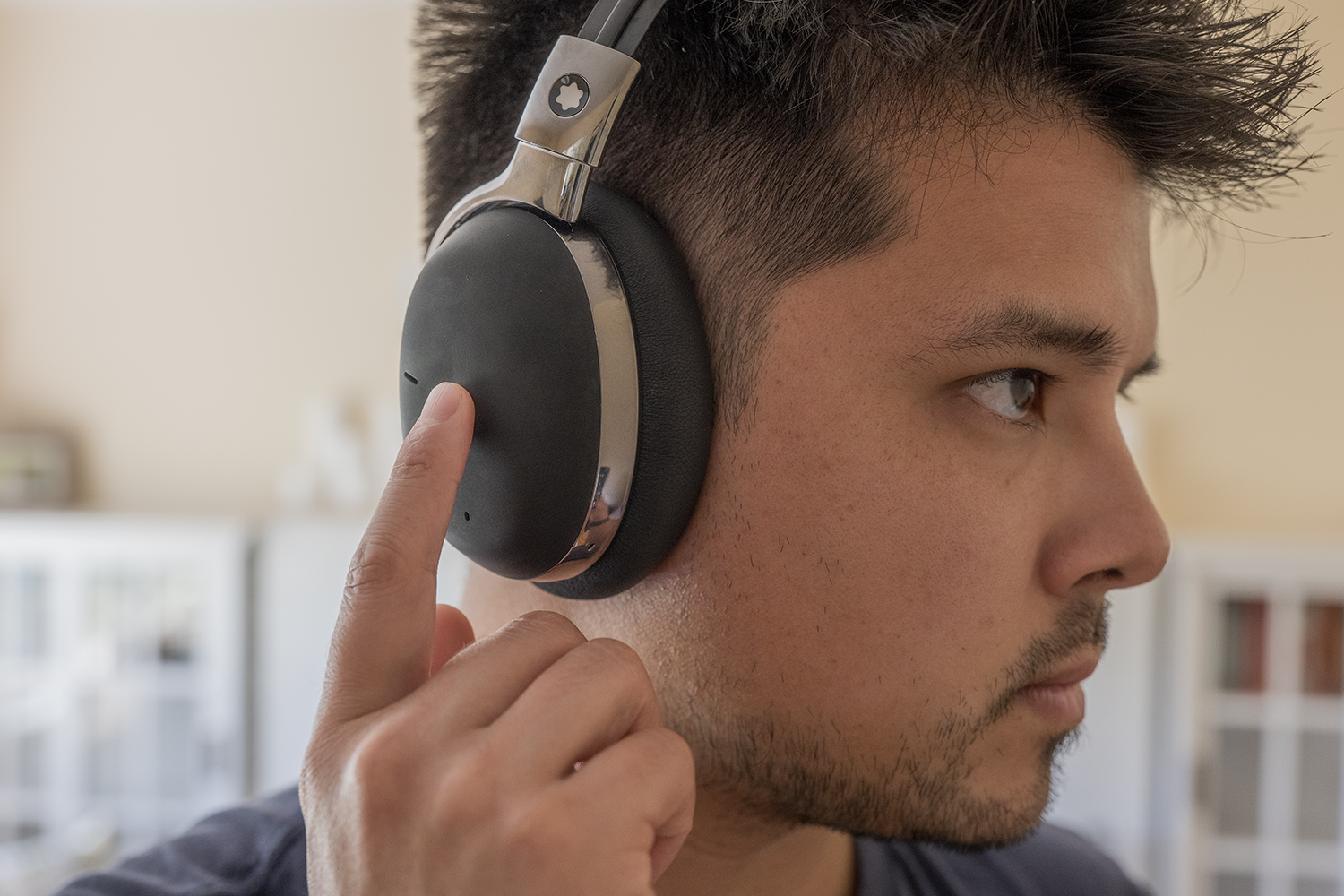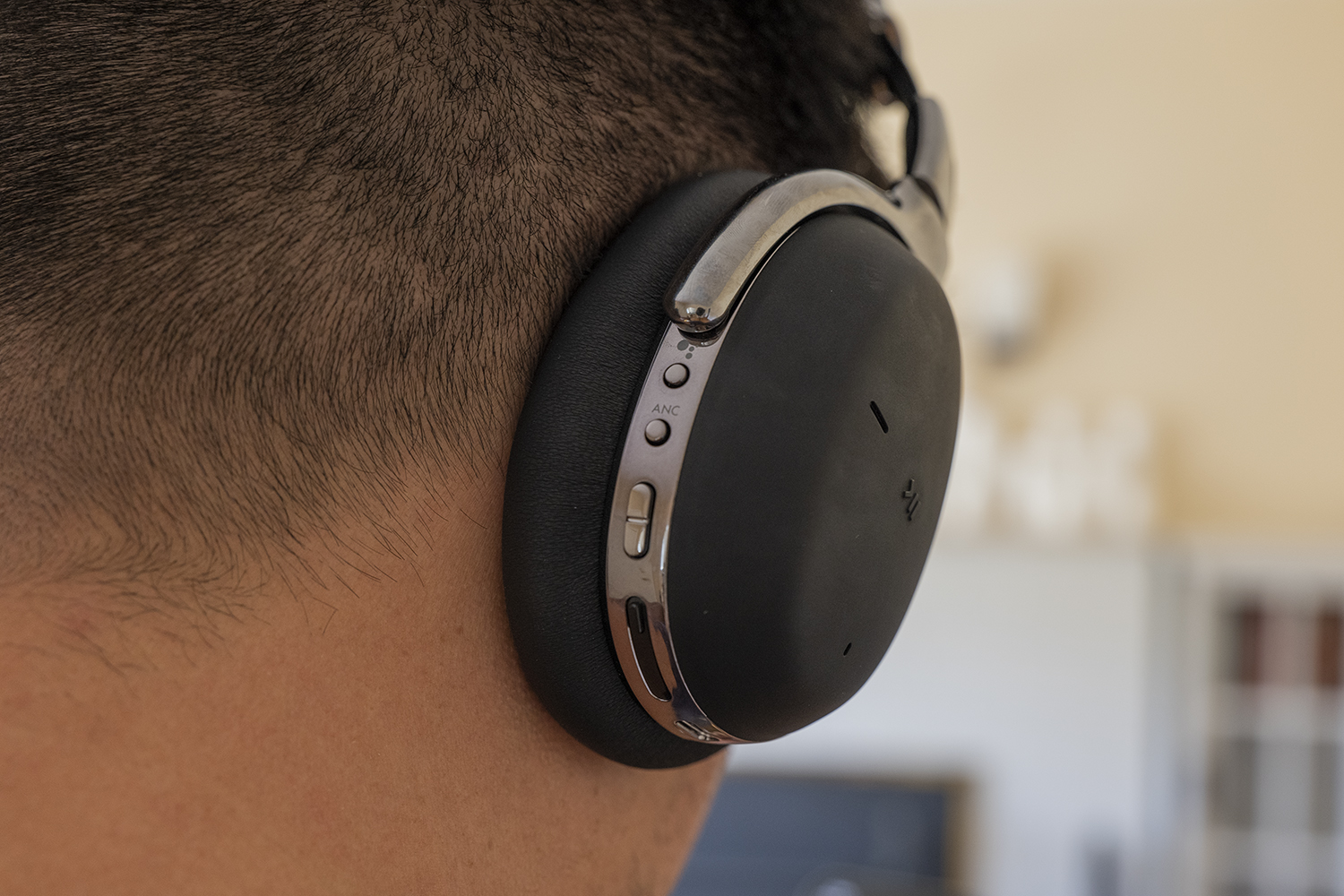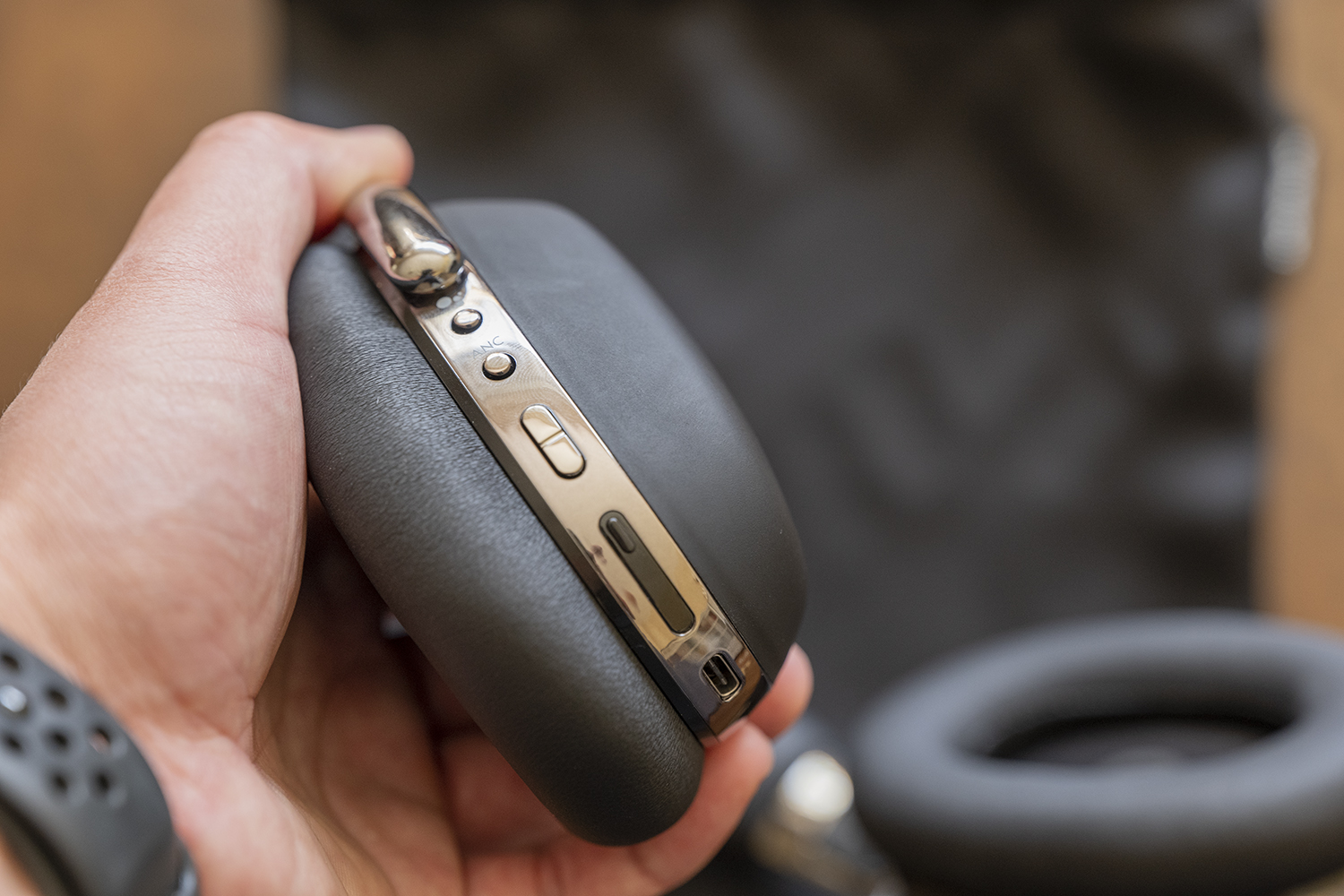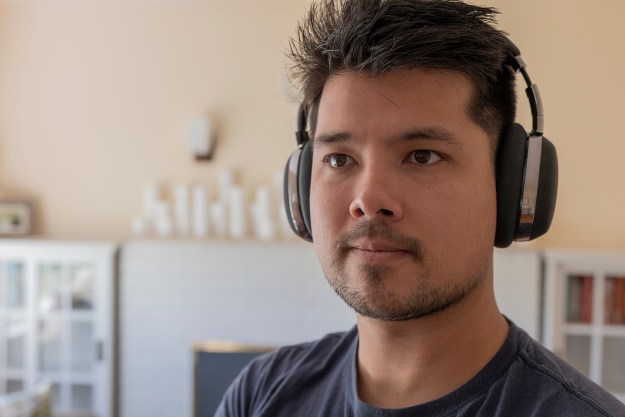
“Great sound, with the luxurious headphone experience you didn’t realize you wanted.”
- Beautiful design
- Exceedingly comfortable
- Warm, approachable sound
- Capable of powerful bass
- Great call quality
- Small, fiddly buttons
- Below-average battery life
- Mediocre feature performance
- Expensive
Montblanc is not a brand I associate with audio equipment — it’s best-known for fountain pens and high-end watches. It wasn’t until I looked at its lineup that I realized the company expands beyond those two mainstays, so its set of luxury headphones isn’t as far off base as I thought.
Montblanc didn’t just slap their name on a pair of over-ears. They engineered them with Audeze’s founder, Alex Rosson. For those in the audio industry, that’s a powerhouse name that carries with it some serious expectations. With him at the design helm and their eye-popping $595 price tag, I had extremely high expectations for the Montblanc MB01 Active Noise Canceling Headphones.
Let’s see if they were met.
Out of the box
Montblanc is a luxury lifestyle brand. A considerable amount of its products’ appeal is going to come from the experience, and that is going to be an undertone to much of this review.
To start, much like opening a new Apple product, taking the MB01s out of the box is a clearly designed to be a pleasant affair. The box is made of heavy, sturdy cardboard. The
As nice as the packing is, though, it’s not sustainable. Much of the packaging is not universally recyclable or compostable, which is something we frown upon.

The MB01s ship with an elegant soft case, a USB-A to USB-C charging cable, a 3.5mm jack to USB-C for listening to music wired, and an airplane audio adapter. Though the travel case is nice for a soft case, I wish that Montblanc had gone with a hard case instead. For
Also, I like that the airplane port adapter is included, but I would have preferred a 3.5mm to Bluetooth adapter instead, considering that airplanes these days more often than not are using a new entertainment console that doesn’t require that dual-prong adapter. And keeping these
Exuding luxury
It’s clear that Montblanc spared no expense with the construction and materials here. The headbands and earcups are made of some of the softest and most supple leather I’ve ever touched, and nearly every other visible part is constructed from metal. Despite all that metal and leather, the
These
The outside of the cups is a kind of rubber that grips easily in hand, and though it isn’t a material I normally associate with high quality, I must admit it looks great and feels nice to use. The pause/play/skip/skip back button, which Montblanc calls the Multifunction Button, is on the right earcup, and pressing that button is immensely satisfying. It’s just the right size, with just the right tactile feedback that makes it easy to use quickly, but hard to hit accidentally. Also, the response time is immediate.
Clearly, someone who wanted these to be fantastically functional
They didn’t get everything right, though. While the left earcup is devoid of any buttons, the right cup houses them all, and it gets a bit crowded. The topmost button calls Google Assistant (and only
The volume buttons are too small for me to use effectively. Reaching behind the earcup to use them, I end up running my finger along all the buttons to make sure I’m touching the right one. The power button, which additionally acts as the Bluetooth pair button, is also curiously small, and made of plastic — unlike the others, which are metal-capped. That tiny button can be hard to hold down if you’re not looking at it, and I have small hands.
Overall, these buttons feel a bit like an afterthought when compared to the Multifunction Button, but that’s likely because the implementation of the latter is so close to perfect that it can be hard for anything else to measure up.
These are some of the most comfortable
As for the metal chrome finish I mentioned earlier, it is easily stained by fingerprints, so you’re going to want to keep a microfiber cloth on hand (Montblanc curiously did not include one) to shine them regularly.
Going back to that soft leather, wearing these
These are some of the most comfortable
The earcups of the Montblanc MB01 are remarkably softer than those on the WH-1000XM4, which are by no means uncomfortable
In contrast, the MB01s have a firmer grip on the sides of my head. I know that the headband is there, but I don’t feel it. I think this can be attributed to the pressure of the MB01s being well-balanced, keeping them affixed to the sides of my head without putting too much pressure on my crown. That headband is also well-padded and cushions against the top of my head extremely well.
Middle-of-the-road features
The Montblanc MB01s have three main features outside of playing audio: Active noise cancellation, intelligent play/pause, and support for Google Assistant. The MB01s only support
Active noise cancellation is aided by the MB01s solid passive noise isolation. However, its active noise cancellation feature is just OK.
Many high-end
Active noise cancellation is aided by the MB01s solid passive noise isolation. However, its active noise cancellation feature is just OK. When you have music playing, you definitely won’t notice any interloping sounds as interior volume and noise cancellation work together excellently. But alone, I could still clearly hear my air conditioner next to me, or the dump truck backing up on the next street over. It’s good enough for most, but not matching the industry-leading performance found in either the Sony WH-1000XM4s or the Bose Noise-Canceling Headphones 700.
Ambient sound mode is a decent experience, though the isolation the cups provide makes your voice sound a bit muffled when you’re making phone calls. You can clearly hear everything around you without it sounding artificially amplified, though.
The battery life is slated for 20 hours with ANC on, which is middling. The MB01s feature quick charge, which will net you 3 hours of listening time after 10 minutes of charging. As far as quick-charge features go, this is again middling — but it’s better than nothing.
At launch, the Montblanc MB01 did not have app support, but as of early September 2020, they did get it, along with a firmware update. I was very happy to get the app, which allows you to set a custom EQ. It’s not a perfect app and still a bit buggy, but I’m glad it’s available. You can’t adjust the strength of the noise canceling, but you can adjust the EQ away from the default, which I recommend.

Sound quality
Out of the box, I could tell that there is the capability for these
The default audio profile is very much mids-driven, with that narrow audio profile giving music a pleasant, warm sound that is easy to listen to. Bass won’t crowd your senses with too much boom, and those higher frequencies will never tug at your heartstrings with achingly high pitch. It’s pleasant enough, but not emotionally evocative.
The MB01s make for fantastic easy listening.
Pushing the bass makes them sound far richer, but the treble gets out of control when changing the equalizer. Barely moving the EQ up makes the sound overly sharp. I ended up only adjusting the lows and left the highs at near-default levels, finding that mix to be my favorite.
Taylor Swift’s entire Folklore album sounds very good through the MB01s, if a bit tighter than on other sources on which I’ve listened. Hans Zimmer’s No Time for Caution comes through powerful and booming with the bass turned up, mirroring the first time I heard it in the theater. With the bass boosted, I can feel the
The soundstage is a bit small on these, and they are not particularly detailed, but the MB01s make for fantastic easy listening.
Our take
If I had the MB01s, the Sony WH-1000XM4s, and the Bose Noise Canceling
Is there a better alternative?
If your budget is $600 for over-ear
How long will they last?
These are, as I hope I’ve made clear, very well-built. They’re not only sturdy, but they’re made of excellent materials. The earcups are also replaceable, so that extends their life. You should expect several years of use, easily.
Should you buy them?
If you have the coin, yes. They sound pleasant and offer a level of comfort I’ve yet to find matched in any other set of
Editors' Recommendations
- Master & Dynamic’s next luxury headphones can tell you when your brain need a break
- Adidas debuts its RPD-01 in-ear sport headphones
- The Sony WH-CH700N are the best wireless headphones under $100 this Cyber Monday

